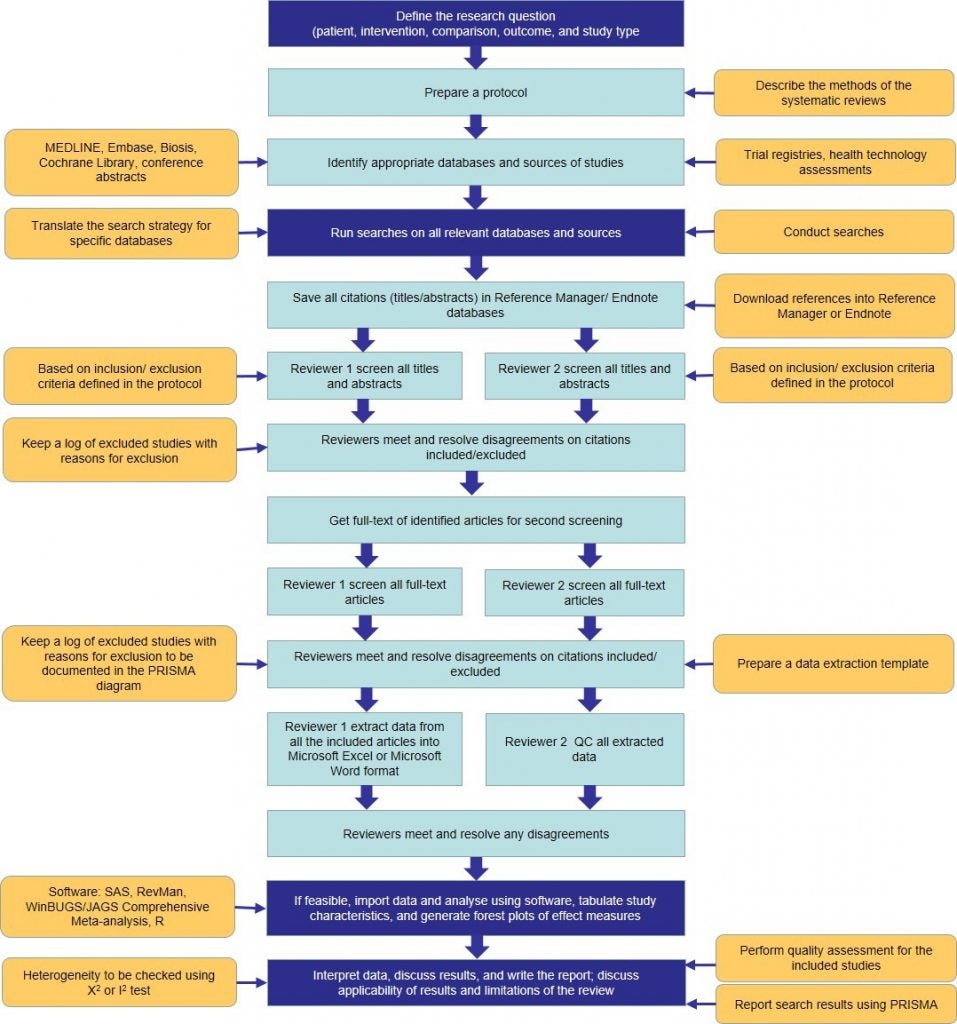What is a Systematic Review
A systematic review is a review that has a clearly formulated research question, and that uses systematic and explicit methods to identify, select and appraise relevant research evidence, and to collect and analyse data from the studies that are included in the review. Meta-analysis is a statistical method used to combine results of more than one study. To find the average or common effect across those studies.
A systematic review brings together all relevant studies to answer a particular question, and can synthesise the results with or without a meta-analysis. A systematic review may present a narrative synthesis of the text, or it may not find the right kind of data to perform a meta-analysis.
The methods used in systematic reviews have traditionally given more attention to research reporting evaluations of interventions than to other kinds of research. Generally, high-quality literature reviews can help you understand:
- Definitions, etiology, and diagnosis of a disease
- Epidemiologic, humanistic, and economic burden of a disease
- Treatment guidelines and patterns in clinical practice
- Efficacy and safety of treatments
- Cost-effectiveness of treatments
- Best practices in economic modeling methods in a disease area
- Economic model inputs including resource use, cost, and utility estimates
Systematic reviews synthesise research findings in a form which is easily accessible to those who have to make policy or practice decisions. In this way, systematic reviews reduce the bias which can occur in other approaches to reviewing research evidence.
The steps for preparing and maintaining a systematic review:
- Defining a research question
- Preparing a protocol
- Locating and selecting studies
- Critical appraisal of studies
- Collecting data
- Analyzing and presenting results
- Interpreting results
- Improving and updating reviews
A schematic presentation of steps in a Systematic Review

